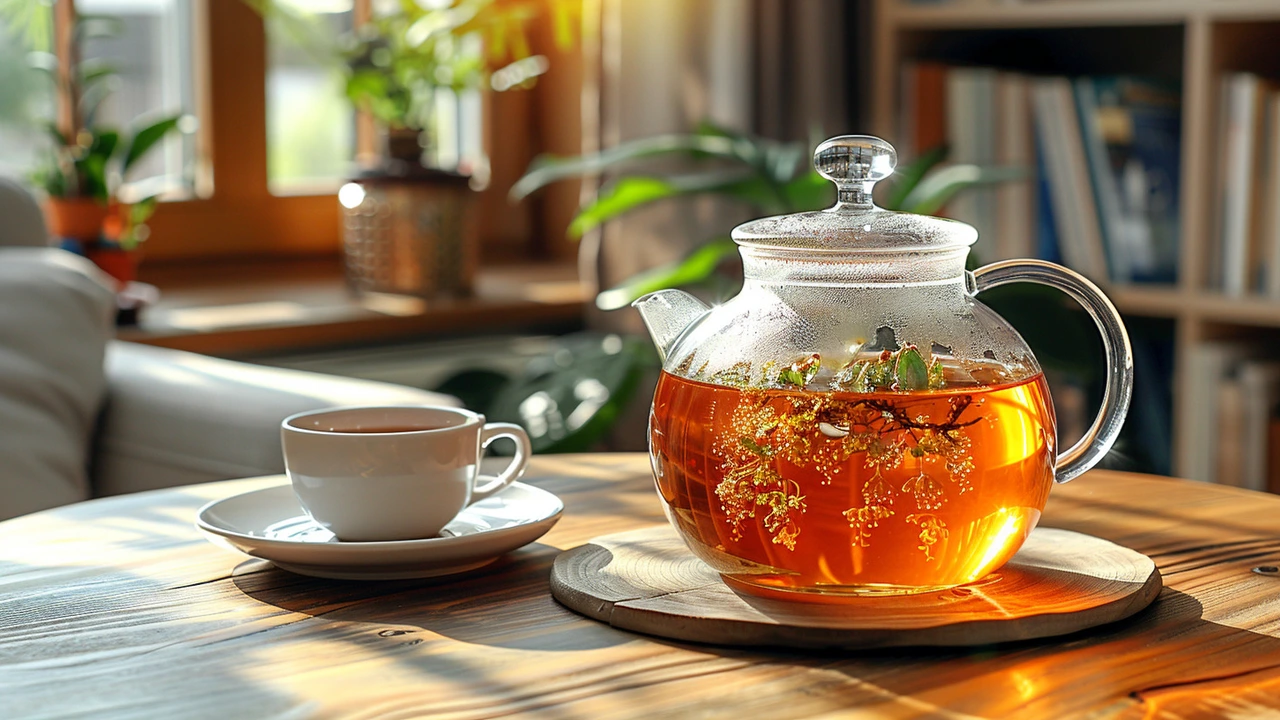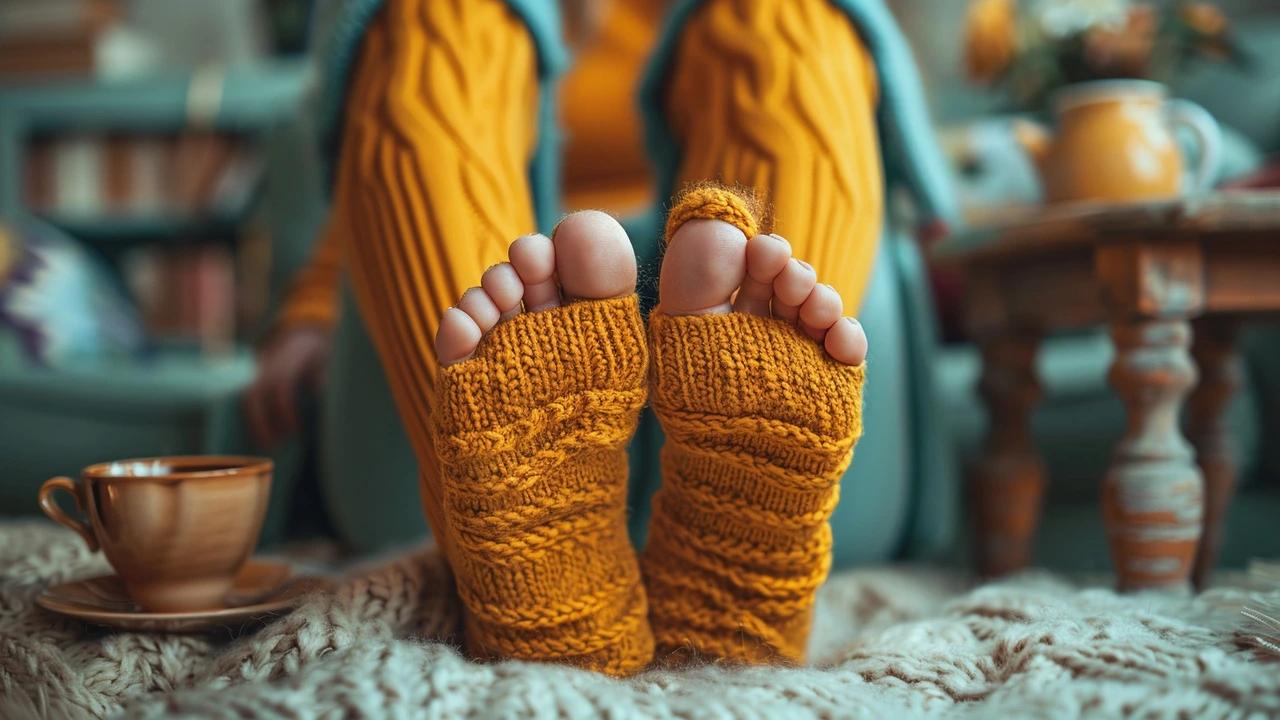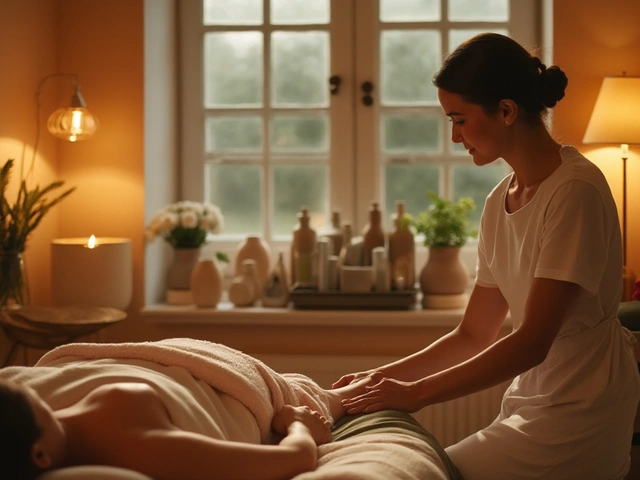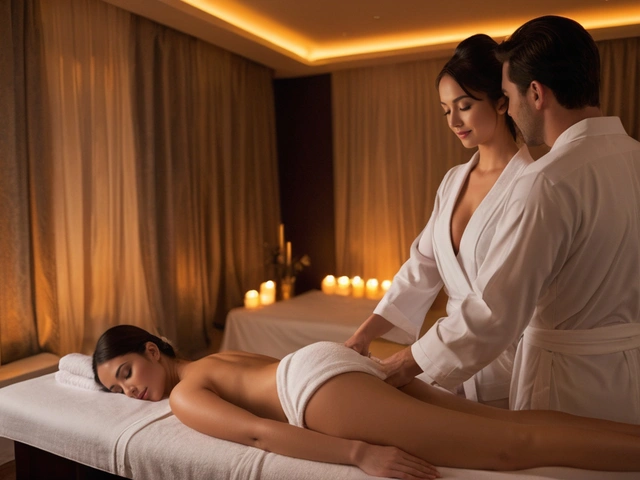Reflexology is an ancient practice that focuses on applying pressure to specific points on the feet, hands, and ears. These areas are believed to correspond to different organs and systems within the body. The core idea is that stimulating these points promotes a beneficial effect on your health by directing energy flow.
This method, often associated with traditional Chinese and Egyptian medicine, has gained popularity for its non-invasive approach to wellness. People experience it primarily for relaxation, but its benefits extend far beyond that. From reducing stress to improving sleep, reflexology has an array of positive impacts.
Many reflexologists believe that this practice can help to release blockages and reroute energy in a healthier way throughout the body. Whether you are dealing with a specific health issue or simply seeking a way to boost your energy and mood, reflexology could be an accessible and enjoyable solution.
Stay tuned as we dive into the various aspects of reflexology, explore the science behind it, discuss its numerous benefits, and provide practical tips to incorporate it into your daily life.
- Understanding Reflexology
- The Science Behind Reflexology
- Benefits of Reflexology
- Practical Tips for Incorporating Reflexology
Understanding Reflexology
Reflexology is more than just a foot massage; it’s a practice rooted in ancient cultures that aims to balance the energy within our bodies. By applying pressure to specific areas on the feet, hands, or ears, reflexologists believe they can affect various organs and systems in the body. The history of reflexology traces back to ancient Egypt, China, and India, where drawings and carvings suggest that early healers used various forms of this therapy to promote health and relieve pain.
The concept is based on the principle that these pressure points are energetically connected to certain body parts. Each foot, for instance, has over 7,000 nerve endings. Reflexologists map these to the corresponding organs and body systems, forming a 'reflexology chart.' When a particular point on the foot is stimulated, it sends a signal through the nervous system, unlocking energy pathways that may be blocked due to stress, injury, or illness.
According to the Reflexology Association of America, “This practice rests on the premise that such work effects a physical change in the body.”
Practitioners often integrate reflexology with concepts of traditional Chinese medicine, which emphasizes the flow of 'Qi' — the vital energy force. Blockages or imbalances in Qi flow are believed to lead to various health problems. By applying pressure on reflex points, reflexology promotes the natural balance of this energy within the body. This holistic approach supports the body's self-healing abilities, encouraging relaxation and better overall health.
Modern reflexology, while maintaining these ancient roots, has adapted various techniques suited for today’s lifestyle. Reflexologists use their thumbs and fingers to apply pressure, often engaging in 'walking' movements across the reflex points. Sessions typically last about 30 to 60 minutes, providing a deeply relaxing experience that many find helpful not just for physical ailments but also for mental and emotional well-being.
There are several theories about how reflexology works. Some suggest it's related to the nervous system, where the application of pressure sends signals through the interconnected pathways, reducing stress and pain. Another theory revolves around the idea that reflexology helps stimulate the lymphatic system, aiding in detoxification and improving the immune response.
If you’ve never experienced reflexology, you might wonder what to expect during a session. Usually, a reflexologist will start by assessing your feet, looking for visual signs and textures before beginning the treatment. The pressure applied varies from gentle to firm, based on your comfort and specific needs. Essential oils or creams may be used to enhance the soothing effect.
Reflexology can be an effective complementary therapy. It’s important to note that while it can support various health conditions, it shouldn’t replace conventional medical treatments. Many people turn to reflexology to relieve headaches, anxiety, and digestive issues, among other ailments.
So, why consider reflexology? With roots in history and a foundation in holistic healing, reflexology offers a path to better health and well-being by working with your body’s natural energy. It’s a gentle, non-invasive therapy that encourages relaxation and promotes the body's healing powers, making it an intriguing option for those seeking a balanced approach to health.

The Science Behind Reflexology
While reflexology is often seen as a complementary treatment, there is interesting research and scientific theories that back its effectiveness. Reflexology operates on the principle that there are reflex points on the feet, hands, and ears that correspond to different organs and systems throughout the body. By applying pressure to these points, it's believed that one can clear energy blockages and enhance overall health.
One of the main theories supporting reflexology is the 'zone theory.' This concept divides the body into ten vertical zones running from head to toe, with each zone corresponding to specific organs and body parts. Reflexologists use this theory to map out which areas of the foot or hand correlate with particular parts of the body, thereby using targeted pressure to address specific ailments.
Scientific studies, though still growing in number, have found some evidence of reflexology's efficacy. For instance, a study published in the

Benefits of Reflexology
Reflexology offers a treasure trove of benefits that can improve your overall well-being. One significant advantage is how it helps in reducing stress. By applying pressure to specific points on the feet or hands, reflexology can calm the nervous system, which aids in reducing anxiety and stress levels. It's an excellent way to foster relaxation, as many have reported feeling profoundly calm after a session. This stress relief can lead to better sleep, improved mood, and enhanced overall energy levels.
Another fantastic benefit is pain relief. Reflexology is commonly used to alleviate various types of pain, including headaches, migraines, and back pain. According to some studies, stimulating certain reflex points can trigger the release of endorphins, the body's natural painkillers. This makes reflexology a viable option for people who prefer holistic methods over medication.
Outcomes associated with better circulation also stand out in the advantages of reflexology. Many practitioners argue that daily pressure on the reflex points helps improve blood flow, which in turn aids in delivering oxygen and essential nutrients to cells more efficiently. Proper circulation is vital for organ function and overall health, and reflexology seems to help in achieving this.
"Reflexology has a remarkable ability to aid in the body’s natural healing process," says Laura Norman, a renowned reflexologist and author. "When you stimulate these reflex points, you promote the flow of energy, revitalizing your body's organs and systems."
Reflexology is also beneficial for detoxification. The enhanced circulation encourages the lymphatic system to clear out waste and toxins more efficiently. As a result, many people find that their immune system becomes stronger, making them less susceptible to illnesses. It’s a simple yet effective way to give your body's natural detox processes a helpful boost.
Encouraging mental clarity and emotional stability is another notable advantage. Reflexology fosters a sense of balance and clarity within the mind, bringing about a better capacity to handle emotional stress. For individuals struggling with emotional imbalances, this practice can offer a much-needed respite.
Prenatal Benefits
Expecting mothers also can benefit. Reflexology is often recommended to help with pregnancy-related issues such as swelling, nausea, and even labor pains. The gentle pressure can be incredibly soothing and help maintain balance during a time when a woman's body undergoes numerous changes. It's even been suggested that reflexology sessions can make for easier childbirth.
Skin Health
Interestingly, reflexology may contribute to healthier skin. Enhanced circulation can lead to a more radiant complexion as nutrients and oxygen are delivered more effectively to skin cells. In addition, the stress relief benefits can have a positive impact on conditions like eczema or acne, which can be aggravated by stress.
Clearly, the advantages of reflexology are extensive. It's a practice that not only aims to treat specific symptoms but works toward achieving a balanced and healthy state of being. Through regular sessions, this ancient method can offer modern-day solutions to many health issues, making it a delightful and beneficial addition to anyone's wellness routine.

Practical Tips for Incorporating Reflexology
Integrating reflexology into your everyday life can be a delightful and rewarding experience. To get started, all you need is a quiet space, a comfortable chair, and perhaps some soothing music to enhance the ambiance. It’s really that simple. While professional reflexology sessions are incredibly beneficial, you can also practice some techniques at home to maintain a sense of well-being in between visits.
Start by learning the basics: The first step is understanding the key points on your feet, hands, and ears that correspond to different parts of your body. There are numerous charts available online that show these reflex points. Once you've familiarized yourself with a chart, pick a specific area, such as your feet, to begin your self-practice.
For best results, follow these simple steps:
- Warm up: Begin by soaking your feet in warm water for about 10 minutes. This helps to relax your muscles and prepares you for the reflexology session.
- Use a comfortable position: Sit in a comfortable chair with your feet on a footstool, or you can lie down if that works better for you.
- Apply pressure: Using your thumb or a specialized reflexology tool, apply gentle but firm pressure on the specific reflex points. For instance, press the pad of your big toe for brain stimulation, or the center of the heel for lower back pain relief. Ease into it, gradually increasing the pressure as you feel comfortable.
- Be consistent: Daily practice, even for just five minutes, can yield significant benefits over time. Consistency is the key to experiencing the full potential of reflexology.
A helpful tip is to integrate reflexology into your nighttime routine. This not only promotes better sleep but also helps you wind down after a long day. Massage your feet a few minutes before bed to signal your body it's time to relax and prepare for rest.
“Reflexology is a natural healing art based on the principle that there are reflexes in the feet, hands, and ears, which correspond to every part, gland, and organ of the body.” - The Reflexology Association of America
Combining reflexology with other wellness practices like regular exercise, a balanced diet, and mindfulness meditation can further enhance your overall health. Remember that while self-practice is beneficial, it's also a good idea to schedule occasional sessions with a professional reflexologist who can address more specific issues and provide a deeper level of treatment.
If you're new to the practice, consider joining a reflexology workshop or class in your community. These classes are often led by experienced practitioners who can teach you the proper techniques and answer any questions you might have.
There's also an abundance of mobile apps and online tutorials available that guide you through various reflexology routines. These can be particularly useful for beginners who need a visual aid to understand the correct application of pressure points.
Incorporating reflexology into your daily routine not only optimizes your energy flow but also supports your body’s natural healing processes. So, take a deep breath, get comfortable, and start exploring the numerous benefits that this ancient practice can bring to your modern life.






